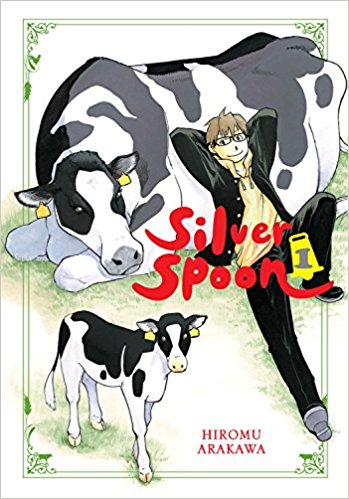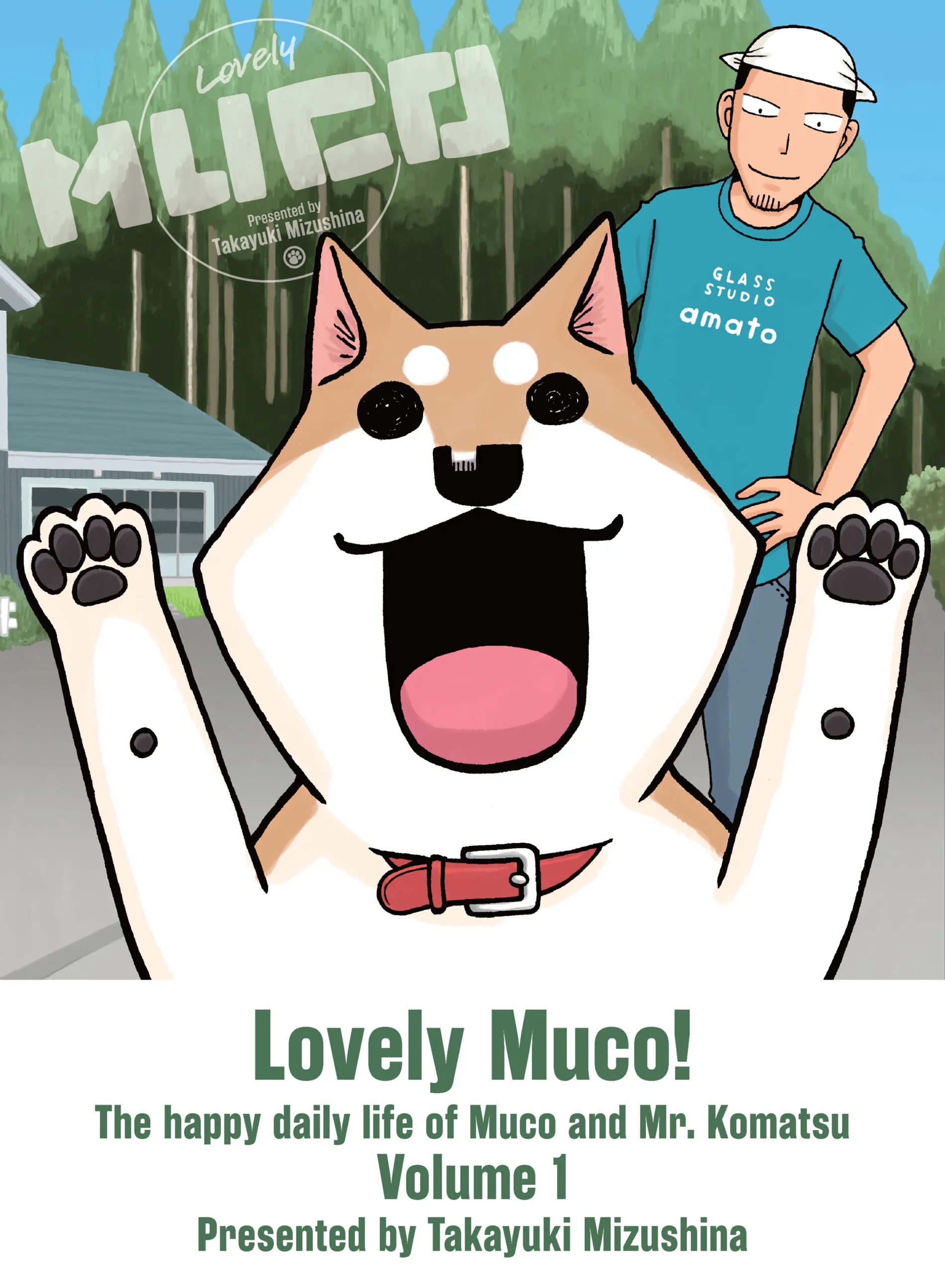The title of Hiromu Arakwa’s latest series is a pointed reference to Kansuke Naka’s The Silver Spoon: Memoir of a Japanese Boyhood. First serialized in the pages of the Asahi Shimbun in 1913, The Silver Spoon traced Naka’s journey from childhood to adolescence through a series of vignettes that recalled turn-of-the-century Tokyo in vivid detail, describing both the bustle of its modern neighborhoods and the rustic isolation of its western regions, a contrast underscored by one of the book’s most important events: Naka’s move to rural Tokyo. “For me to be born in the midst of Kanda was as inappropriate as for a kāppa to be hatched in a desert,” he declares, viewing the country as a place of rebirth.
Yuugo Hachiken, the fictional protagonist of Arakawa’s Silver Spoon, undertakes a similar journey, moving from Sapporo to the Hokkaido countryside, where he enrolls at at Ooezo Agricultural High. Though his peers chose the school for its curriculum, Hachiken chose it to escape the college prep grind — cram schools and high-stakes tests — and his parents, who seem indifferent to his misery. His competitive streak remains intact, however; he assumes that he’ll be the top student at Ezo AG, sizing up his classmates’ mastery of English and geometry with all the condescension of a prep school boy in a backwoods schoolhouse.
Hachiken’s path to redemption predictably begins with a rude awakening: there’s no spring break and no sleeping in at Ezo AG, where students rise at 4:00 am to muck stalls and harvest eggs. Adding insult to injury, his cosmopolitan prejudices are challenged by his peers, who are more ambitious, motivated, and knowledgable than he is; in one of the volume’s best scenes, Hachiken’s elation turns to despair when he overhears his classmates discussing the transformative effect of somatic cell cloning on the Japanese beef market. “Are they speaking in tongues!!?” he fumes, rivers of sweat pouring down his ashen face. “Are you guys smart or stupid? Make up your minds!!”
After a series of humiliating trials, Hachiken makes tentative steps towards fitting into the community and finding his purpose. His incentive for trying a little harder is, unsurprisingly, a girl — specifically Aki Mikage, a pragmatic, cheerful soul whose horse-wrangling skills, can-do attitude, and endless patience with dumb questions endear her to Hachiken. Though she’s instrumental in persuading Hachiken to join the equestrian club, her main role in volume one is to help Hachiken overcome his sentimental ideas about farm life, encouraging him to see the farm as a factory or business rather than a collection of cute animals.
This bracing dose of reality is one of the manga’s strengths, preventing the story from devolving into a string of sight gags and super-deformed characters screaming and flapping their arms at the sight of poop. Near the end of volume one, for example, Mikage invites Hachiken and fellow classmate Ichirou Komaba to the Ban’ei Racetrack to watch a draft horse pull, an outing that quickly turns somber when they stumble upon a horse funeral in progress. “Some souls are thrust into a cruel existence where there are only two options, life or death, simply because they happen to be born livestock,” Mikage’s uncle observes — a statement that makes a deep impression on Hachiken, who’s just beginning to realize that many of the piglets and chickens he’s raising will be on someone’s dinner table in a matter of months.
The racetrack episode also highlights Silver Spoon‘s other secret weapon: its terrific supporting cast. Though Hachiken, Komaba and Mikage’s more serious conversations dominate the chapter, one of the series’ most memorable personalities — Nakajima, the equestrian club supervisor — makes a cameo appearance as well. Nakajima exemplifies Arakawa’s gift for creating visually striking characters whose goofy, exaggerated appearances belie their true nature. He looks like a Bodhisattva but acts like a gambler, a tension that plays out almost entirely on his face. When riding a horse or encouraging Hachiken to join the equestrian club, for example, his eyes are half-open, framed by two semi-circular brows that suggest a meditative state, but when he visits the race track, the thrill of betting brings a maniacal gleam to his eyes, pulling his eyebrows into two sharp peaks. He even dresses the part of a Saratoga regular, trading his pristine riding outfit for a trenchcoat — collar popped, of course — and low-slung fedora.
As this comic interludes suggests, the twists and turns of Hachiken’s evolution from sullen teen to happy young man are dictated more by shonen manga convention than fidelity to Naka’s The Silver Spoon — there are 200% more jokes about cow teats and chicken anuses — but the sincerity with which Arakawa captures the emotional highs and lows of adolescence shows affinity with Naka’s writing. Hachiken’s mopey interior monologues and fumbling efforts to connect with his classmates are as authentic as Naka’s own reminiscences; both convey youthful angst without irony, embarrassment, or “the layered remembrances of adulthood” (Kosaka). And for readers more interested in laffs than literary references, there are plenty of those, too; Hachiken spends as much time hanging out with ornery ruminants as he does ruminating, all but ensuring a bumper crop of manure gags in volume two. Highly recommended.
Works Cited:
Arakawa, Hiromu. Silver Spoon, Vol. 1, translated by Amanda Haley, Yen Press, 2018.
Kosaka, Kris. “A misanthropic memoir from Meiji Era Tokyo.” The Japan Times, 26 Sep. 2015, https://www.japantimes.co.jp/culture/2015/09/26/books/misanthropic-memoir-meiji-era-tokyo/#.Wres_5PwY1g. Accessed 24 Mar. 2018.




Alhazred23 says:
One correction: Hachiken moves from Sapporo, the urban capital of Hokkaido Prefecture, not Tokyo.
Katherine Dacey says:
Thanks for catching that detail — I’ll fix that right now!